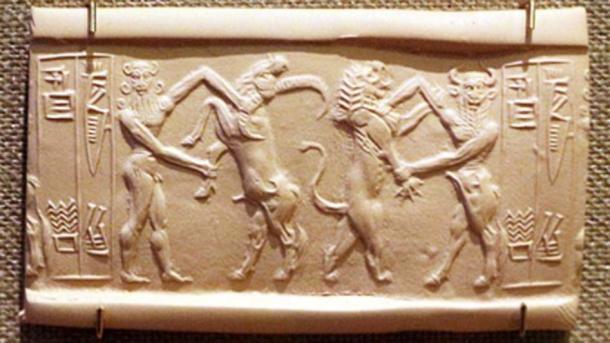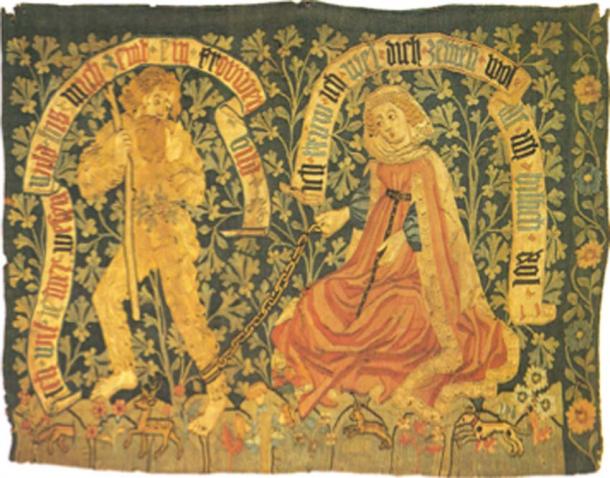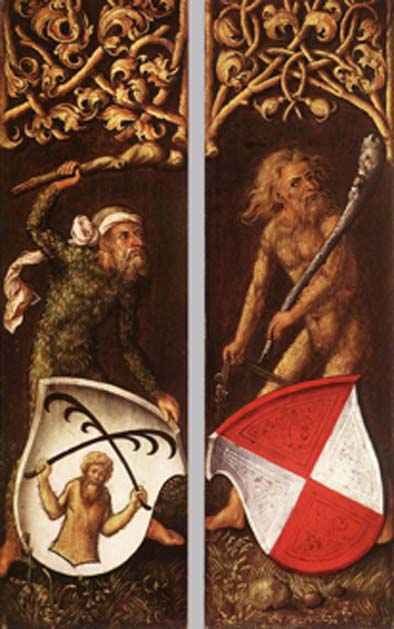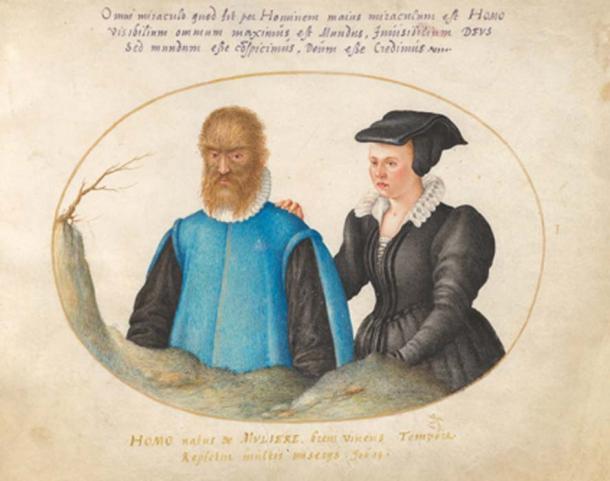
Wild Men of the Ancient World: Legends Across the Globe Tell of a Humanoid Beast – Are They Real?
Man-like beasts appear in myths and legends of cultures around the globe. The best known ‘wild man’ phenomena of today is the Sasquatch or Big Foot of North America, but there are other legends such as the Yeti (Abominable Snowman), said to live in the wilds of the Himalayan mountains. There are many lesser known wild humanoid cryptids; the Orang Pendek, which is said to said to live in the remote forests on the island of Sumatra in western Indonesia, Almas in Mongolian folklore, the Bukit Timah Monkey Man, or the Yeh Ren Man-Monkey which is a legendary Chinese relative of Big Foot.
The legend of Big Foot and other wild men seems like a modern concept. The controversial and hotly debated Patterson film reportedly shows footage of a live Big Foot taken in Orleans, California in the autumn of 1967. The widespread attention the film received brought the concept of Big Foot into the public domain and into modern popular culture with movies and TV shows such as Harry and the Hendersons inspired by the hairy humanoid caught on the tape.
But these legends of wild men are not just a global phenomenon - they are an ancient one. Many of these myths have prevailed for hundreds of years, being passed on from generation to generation as people swear to have seen evidence of the humanoids themselves.
The Wild Man Enkidu in Ancient Mesopotamia
The earliest surviving mention of a wild man is the Enkidu (Enki’s creation) in the Epic of Gilgamesh, written more than 4,000 years ago in Mesopotamia.
Enkidu is a central figure in the epic, in which he is described as an uncivilized savage who was raised by animals and lived with herds and game in the wild. He is the embodiment of the natural world and is the opposite of the cultured and eloquent hero Gilgamesh.

Ea wrestling with a water buffalo and Enkidu fighting with a lion. (Sailko / Public Domain)
Unlike many other wild men, in other legends, Enkidu is able to be tamed. He is taught the ways of the civilized world by a prostitute, Shamhat, after spending seven days enjoying her company which resulted in the animals rejecting him when they sensed her human scent on him.
He becomes a loyal companion to Gilgamesh and his tragic death deeply affects the cultured hero, inspiring him to seek out immortality so he does not suffer the same fate. The fact a wild man plays such an important role in a tale as ancient as the Epic of Gilgamesh shows how inspiring the idea has always been to us.
Ancient European Wild Men
Both Greek and Roman myths are filled with sexually voracious wild men. The satyr and faun are both wild men associated with fertility. Both the Greek god Pan and his Roman equivalent Faunus are depictions of the wild man figure and both are gods of nature and the wild – but also of fertility.
- Bestiary, The Book of Beasts: Compendiums of Medieval Monsters and Moral Lessons
- Fossils of Giant Prehistoric Beasts Discovered in Underwater Ice Age Death Cave
- Chinese Fantastic Beasts: The Taotie Demon Who Eats Humans

Sculpture of the coupling of the god Pan with a goat. (Pradigue / Public Domain)
The Romans also described a Celtic figure called Dusios. They compared the pagan god to their god Faunus and the Greek god Pan but are careful to emphasize the savage nature of Dusios to differentiate between him and their own wild men. Dusios is not just a fertility god, he is described as impregnating both animals and women either by surprise or by force.
Historians believe these figures are all rooted in ancient legends from Neolithic cultures across modern day Europe and Russia. They point to the Slavic creature known as the Leshy which is described as a short humanoid forest guardian with a large bushy beard and a tail.
The Leshy is rumored to capture children and travelers if they do not respect his forest. Although some people have linked the Leshy and creatures like the satyr, the Leshy is not associated with fertility and is closer to our modern Big Foot legends than the Greco-Roman concepts of wild men.

The Leshy, wild man, is a tutelary deity of the forests in Slavic mythology. (Рыцарь поля / Public Domain)
There are many other examples of wild men in Eastern European and Russian mythology dating back many hundreds of years, and these range from benevolent figures who are protectors of the forests and mountains to sinister and demonic wild men who inflict harm on anyone who discovers them. The Ural region of Russia has a legend of the divnye lyudi who are beautiful wild people with the ability to tell the future, while the Kostroma Oblast region believe in the chort – a hideously grotesque looking wild man with a thin tail and cloven hooves who is inherently evil in nature and is considered to be a minion of Satan by Christians in the region (in folk tales, the chort often tries to trick people into selling their soul for trivial things.)
Early Medieval Beliefs of Wild Men
The legend of the wild man remained a part of European culture and sources from the 9th and 10th centuries. One Spanish source which describes the penance given for certain behaviors mentions the minor penalty faced by those who dressed up as wild men and took part in a dance which was a resurgence of earlier pagan practice. Around the same time, in the 9th century, Irish folklore describes how a pagan king is driven mad when he attacks a Catholic bishop, eventually transforming into a beast who roams the woods.
The Konungs Skuggsjá, an educational Norwegian text from the 13th century, describes a creature very similar to other descriptions of wild men. The text says the strange creature was like a human but with a great deal of coarse hair. It says the creature was captured in the woods in Ireland and that no one could tell if it understood human speech or not.

A page from Konungs Skuggsjá, the ancient Norwegian text describes a wild man type creature. (Haabet / Public Domain)
These accounts of wild men from the earlier medieval period are once again varied. There is the god-like wild man echoing Pan and Faunus, and the savage beast resembling a human like the Leshy. It is in this period that the earliest use of the wild man as a warning of the dangers of immorality survives, with the cautionary Irish tale warning that becoming a wild man is a fate anyone may suffer if they defy the church.
Later Medieval Wild Men
The wild man was now firmly rooted in folklore and the many roles he played were depicted in artwork throughout the later medieval period across Europe. The images all show a human with a thick pelt of hair and the figure appears in embroidery, carvings, paintings, statues, stained glass, illuminated manuscripts, and even on more obscure objects such as a bread mold.
Along with artwork, it is during the 14th century the term ‘woodwose’ came into use as a way of describing a legendary wild man figure. The word is the origin of the modern surname ‘Woodhouse’, but its etymology is somewhat unclear – although ‘wood’ definitely refers to woods or forests, the suffix wose has several potential meanings. The two most likely translations of wose are ‘being’ and ‘forlorn or abandoned person’.
This medieval wild man was described in sources such as Sir Gawain and the Green Knight as a hairy beast like person, and the woodwose appears in artwork of the time as a bestial and vicious creature – though just like the Enkidu in the Epic of Gilgamesh, this wild man can be tamed by the right person (usually a pure and virtuous young woman).

Late 15th century tapestry showing a woodwose, wild man, being tamed by a virtuous lady. (Cherubino / Public Domain)
The medieval European concept of a wild man drew on earlier sources, including the Roman faun, but the woodwose was also based on accounts written by ancient historians who documented creatures which were believed to be wild men.
One such source for legends like the woodwose is the Greek explorer Hanno, who travelled to the western coast of Africa in the 5th century BC. Hanno described an island filled with hairy savages – predominantly female – known by the locals as gorilla (now known to be gorillas) and another source is the historian Pliny the Elder, who described another race of savage human-like creatures in India (now known to be gibbons).
The accounts of these creatures were passed down over time and contributed to myths and legends of wild men living free in the forests. It was not until 1902 that the mountain gorilla was finally confirmed to be real and not just a local legend with no basis in reality. For people in medieval Europe the descriptions of creatures like this, which had been exaggerated and passed on to people who had never seen them, must have been evidence that creatures like the woodwose really were roaming the forests, even if it was only in far off lands.
The Town of Wildemann
Rumored encounters with wild men have resulted in myths, legends, and artwork – and in one case, the founding of a town. According to local legend, the German town of Wildemann was founded by miners in 1592.
The miners claimed to have seen a gigantic wild man by the shore of the river Innerste. The wild man was swinging a fir tree as a club to defend his giant female companion from the strange men as they attempted to capture him and take him to show the local earl. They claim they were successful, but the wild man died on the journey to the earl.
When they returned to the spot, he had been, they found a rich deposit of ore and the town was founded and named in his honor. In a further tribute, the coat of arms for Wildemann bears the image of a wild man, which was also a symbol for miners in Renaissance Germany and appears on a number of other coats of arms.

The image of the wild man appeared on the coats-of-arms, in Germany, well into the 16th century. (Cherubino / Public Domain)
Pedro Gonzales – A Real Ancient Wild Man
We know today that the condition hypertrichosis is a condition causing excess hair growth over the entire face and body. During the heyday of the freakshow in the 19th and early 20th centuries a number of people with hypertrichosis made a living as performers, where they were described as wild men and were showcased as having both animal and human traits.
In 1537, Pedro Gonzales was born in Tenerife, Spain. As a Renaissance man with hypertrichosis, he became known as a wild man, or “man of the woods” and by the end of his life he had become quite famous. Gonzales became known as Petrus Gonsalvus and he was presented at just ten years of age as a gift to King Henry II of France.
Henry saw Pedro as a novelty and chose to educate him as a nobleman rather than treating him as an animal. He was taught a broad range of subjects including Latin and was better educated than some of the members of the aristocracy. While he lived at court in Paris for 40 years, he spent some time at the court of Margaret of Parma, who was regent of the Netherlands. It was here he met his wife, Lady Catherine.
- Fantastic Beasts: Grindelwald, Dark Fantasies and Secret Societies
- Miners Strike Ice Age Gold Finding Two Beasts of Beringia in Yukon
- Hereford Mappa Mundi: Legendary Cities, Monstrous Races, and Curious Beasts in a Single World Map

The wild man, Petrus Gonsalvus and his wife, Lady Catherine. (Aavindraa / Public Domain)
Just like many other wild men before him, Gonzales was the inspiration for a new folk tale. His relationship with Lady Catherine is believed by many to be the inspiration for the classic fairy tale Beauty and the Beast. While Petrus was given special attention by King Henry and his wife, he was still considered a wild man by many of his contemporaries and they did not believe he was fully human.
But his story is just one of hundreds and the wild man is a concept which appears time after time throughout cultures worldwide. From the earliest surviving written legend, Epic of Gilgamesh, to theories about Big Foot and other wild men today, there is something about the figure of a being which is both human and animal which fascinates us.
The legends and folklore surrounding wild men has always been dichotomic. The wild man is representative of what humans would be without civilization. For some that is cautionary – without civilization the wild man is a dangerous savage who kidnaps children or attacks innocent people. For others, the wild man is a romantic concept.
As society evolves, we rely more on technology and live increasingly in crowded metropolitan areas – the chance that there is still a wild man undiscovered in the woods or mountains somewhere is particularly exciting to many of us, as it has been for our ancestors for thousands of years.
Top image: The wild man has many names throughout the legends of the ancient world. Source: warpaintcobra/ Adobe Stock.
References
Glickman, J. 1998. Toward a Resolution of the Bigfoot Phenomenon. [Online] Available at: http://www.photekimaging.com/Support/rptcol2.pdf
Husband, T. and Gilmore-House, G. 1981. The Wild Man: Medieval Myth And Symbolism. [Online] Available at: https://books.google.co.uk/books?id=LFDD4nuC1HoC&printsec=frontcover&redir_esc=y&hl=no#v=onepage&q&f=false
Kerziuk, O. 2018. More Mountains with Wild Men. [Online] Available at: https://blogs.bl.uk/european/2018/05/more-mountains-with-wild-men.html
TYB. 2010. 10 Beasts that Used to be Mythical. [Online] Available at: https://listverse.com/2010/04/16/10-beasts-that-used-to-be-mythical/
















Comments
Sarah, good afternoon; I've just read your article regarding the 'wild man' and its history thereof. Thank you for providing such a wealth of information and background; this really was most fascinating, and, as an enthusiast of such creatures, I learned a great deal as well. I greatly appreciate your time and effort to present this topic on a historical basis, as well. Again, thank you!
Sincerely,
Sanjay R Singhal, RA
Sanjay R Singhal, RA
Hello Sarah,
All I can say on this topic if I hadn't been reading The 3 Major Bible Books of Enoch I wouldn't of thought it's possible it happen that they were all Myth's whereas for Me The Bible is True and the constant reminder in The Scriptures speaks about The Nations of the World worshipping many gods save for The Living God of Abraham because they knew Him Not.
Now I'm a little aware that these Beings did Walk the Earth and that means those Wildmen who still thrive somewhere today Walks the Earth. So I guess the question is how are some people seeing them and not others well Because they weren't looking for them, to the individual are and occasional group it all starts out as an ordinary day where nothing remarkable will take place.
As for Civilization and The Hairy Being in The Epic of Nimrod Gilgamesh (Genesis/Jubilees identifies Him as Nimrod while other Ancient Writings call Him Gilgamesh), it's always interesting on whose definition is Civilized.
I see nothing wrong with The Wildmans lifestyle it was what made him unique and taking him away from his environment is most likely the real reason He died. Just thought I put that out there.
Great article Sarah look forward to reading More of your Article's. Goodbye!